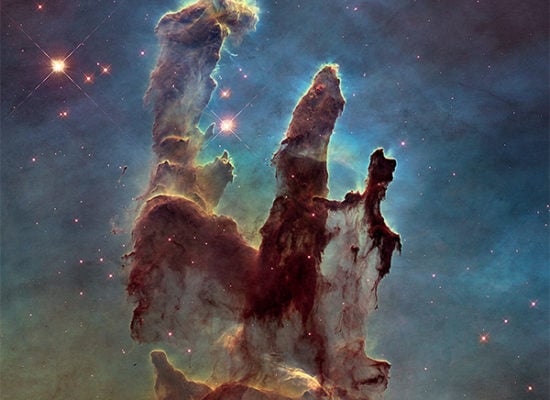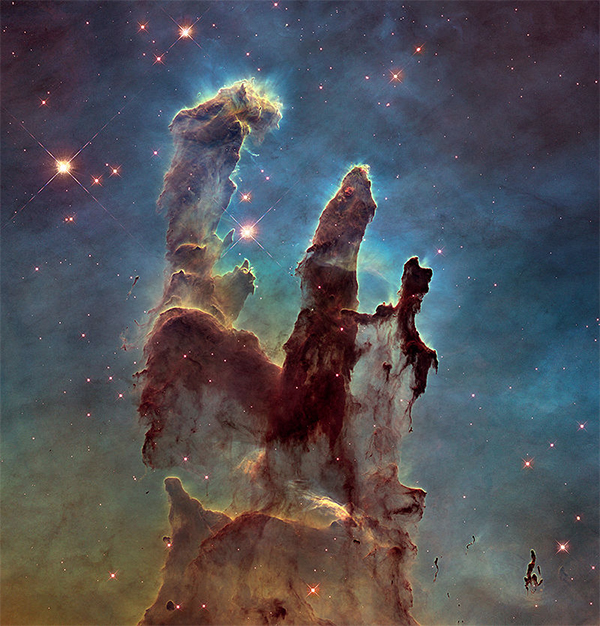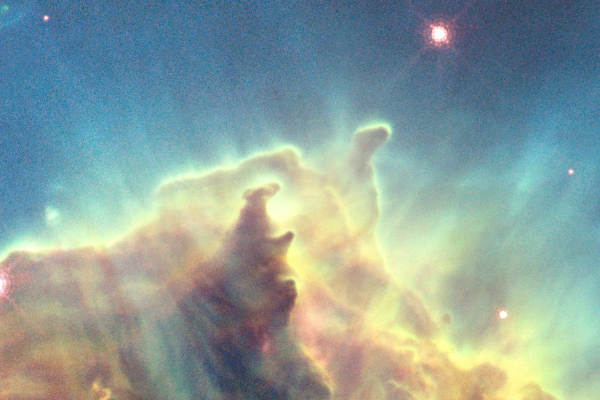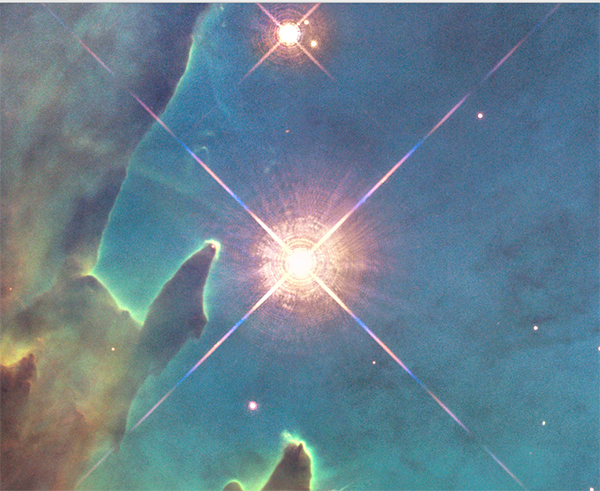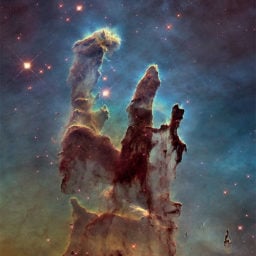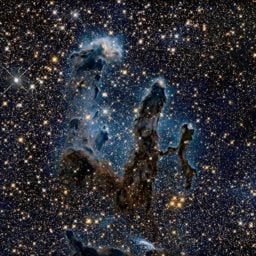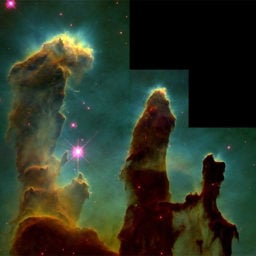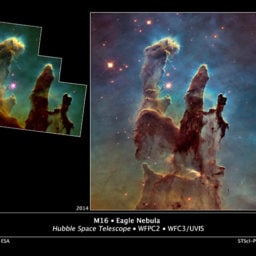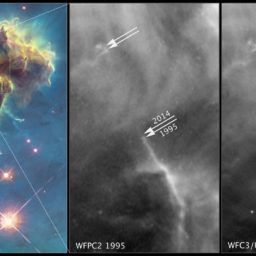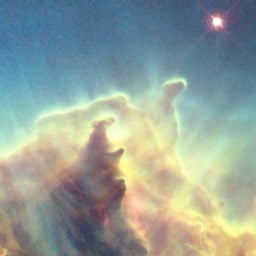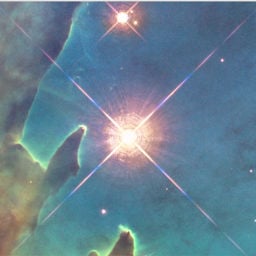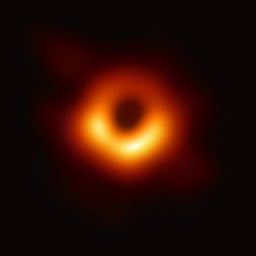The Hubble Space Telescope turns 25 this April, and NASA has kicked off the anniversary celebrations with a bang, releasing a gorgeous specimen of high-resolution space photography depicting the Pillars of Creation formation.
Part of what is officially dubbed M.16, or the Eagle Nebula, a star-forming region full of gas and dust, the Pillars of Creation were first observed by Hubble in 1995. The composite image was made up of 32 separate photos taken by four cameras and stitched together.
Now, 20 years later, NASA has revisited the iconic image with a new photograph, captured in with spectacular detail and clarity. Just how high-res is the new file? A whopping 6,780 by 7,071 pixels and 33 megabytes. Good luck downloading that with your basic Time Warner internet package. For perspective, artnet News generally keeps our images to 600 pixels at their widest—the shrunken versions above seriously fails to do this otherworldly image justice.
The two column-like formations of interstellar matter that lend the image its evocative name, which astronomers call elephant trunks, show a few small changes from the 1995 version, and the photo captures a larger field, but the overall effect is the same. (The blank space in the old photograph is the result of Hubble’s four cameras operating at different magnifications, creating a gap when the scales are adjusted to match.) Needless to say, the size of the formations is mind-blowingly massive, with the largest pillar measuring an astonishing four light years long.
A near-infrared image also released by NASA reveals even more budding stars twinkling in the abyss. “That’s because the infrared light penetrates much of the gas and dust, except for the densest regions of the pillars,” explained the space agency in a statement. “Newborn stars can be seen hidden away inside the pillars.”
Located some 7,000 light years away, the Pillars offer a tantalizing snapshot into our universe’s distant past: the view captured by Hubble is actually believed by astronomers to have been destroyed some 6,000 years ago by a supernova. If that’s true, we’ll be able to see it happen from earth a mere thousand years from now.
“The ghostly bluish haze around the dense edges of the pillars is material getting heated up and evaporating away into space,” Paul Scowen of Arizona State University’s School of Earth and Space Exploration said in the statement. “We have caught these pillars at a very unique and short-lived moment in their evolution.”

